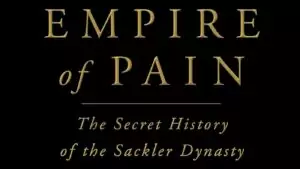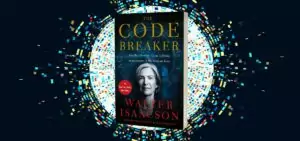By Richard Swan

✅ AI Essay Writer ✅ AI Detector ✅ Plagchecker ✅ Paraphraser
✅ Summarizer ✅ Citation Generator
Very occasionally a book comes along that changes your life, in the sense that it alters your thinking and causes you to reevaluate the things that “everyone knows.” Time’s Anvil by Richard Morris is such a book.
 “Have you found anything interesting?” is, according to Morris, the question he is most commonly asked at archaeological digs. It is also the kind of query likely to be aimed at a book reader. So let us try to address some of the questions frequently asked about books.
“Have you found anything interesting?” is, according to Morris, the question he is most commonly asked at archaeological digs. It is also the kind of query likely to be aimed at a book reader. So let us try to address some of the questions frequently asked about books.
What is it about?
On one level, Time’s Anvil is a book about archaeology, which does not sound particularly promising. Archaeology can be a niche subject, and it can be arid. The book starts from what may seem an innocuous topic: a survey of the archaeology of Britain—or more specifically England—across time. However, that includes both the entire history of Britain and the history of archaeology itself, and the book is notable for both its breadth and depth. It has the vision to sweep across whole swathes of time—”for most of the last million years ‘our island story’ has been nothing of the kind”—and also to focus in immense detail on single events—the fascinating section reinterpreting the Battle of Naseby is based on the distribution patterns of musket balls found on the battlefield. It thus offers a comprehensive overview of English history and archaeology, and a series of specific examples—including lost villages, cathedrals, industrial developments, holocaust denial—that are absorbing in themselves, but which also form the evidence on which the central theses are built.
What is it really about?
From this combination of wide and narrow focus, with a secure and meticulous base, Richard Morris challenges many of the common beliefs about what we ‘think we know’ about the past. It is thus an extremely timely book, at a point when the question of ‘Englishness’ and ‘Britishness’ is a daily topic in newspapers and the public conscience.
Morris’s book is subtitled “England, Archaeology and the Imagination,” and it is the last of these words that may be emphasized. Morris states that the book is mainly “about how the past is read, and about what we ourselves bring to the reading as well as what we find.” Yet he dares much more than this. Exploring the past, he says, “harnesses the imaginative power and curiosity that characterizes our species. The thrust of a question will alter according to who asks it, when, or why, and within what framework of thought or knowledge.” It is his task to challenge the “framework of thought” we use when examining the past, particularly the way that we have tended to buy into grand narratives and simplistic divisions of the past into discrete periods.
His ability to look across the whole of time leads him to see patterns of continuity and development that stretch across hundreds and thousands of years. As he puts it, “the argument of this book is that we have underestimated connections between periods, things, institutions and ideas that are normally studied apart and assumed to be unrelated.” Commonly-used labels like ‘Roman Britain,’ ‘Dark Ages,’ and ‘Industrial Revolution’ hide more than they reveal: “we may well have created, or at least exaggerated, a history of ‘pivotal moments’ and ‘watersheds’ between epochs of our own making. More recent approaches to material culture give more weight to endurance and continuity, and (on the broader view) to gradually changing systems wherein different elements co-evolve at different speeds, in different ways.”
For example, he demonstrates that the long-held (and still popular) view that Britain was covered in woodland prior to Anglo-Saxon times is a myth, created because “a sparsely settled prehistoric landscape was … indispensable to a particular view of English selfhood: the isolationist legend of an English nation that was self assured and self-sufficient.” “The idea of a near-empty prehistoric Britain had been a self-reinforcing illusion,” he explains, whereas in fact “in many parts of prehistoric Britain land was divided as comprehensively and intricately as in any later period.” The result was that by 1000BC “there was probably less woodland in England than there is now.”
In the Vale of Pickering, to take one of his numerous detailed examples, there was “a filament of farms.” “Taking shape around 500BC, it was occupied for more than a thousand years. In existence long before the Romans arrived, still existing after their army left…” It is not long before we are forced to reassess what we “think we know,” and realize that the use of simplistic terms like “Roman Britain” can have a seriously distorting effect on our understanding of the past.
Morris uses a succession of examples like this both to explore the historical grand narratives that have been habitually used, and to demonstrate the way that the development of archaeology has served to undermine them.
Is it convincing?
One of the book’s major strengths, and most noticeable features, is the way it builds its overarching statements from meticulously-researched detail. A text of 400 pages is followed by 50 pages of footnotes and references; the sheer number of sources, articles, and books cited is remarkable. It is no surprise to find the slightly rueful note in the acknowledgements stating the book was begun in 2000, but not finished until 2011. The reader can follow any of the leads provided by the footnotes and be assured of finding persuasive and comprehensive evidence for the conclusions that Morris draws.
To take a single instance, his thought-provoking comments on Bronze Age metal-working are accompanied by a footnote directing the reader to an intriguingly-titled article in World Archaeology: “The faerie smith meets the bronze industry: magic versus science in the interpretation of prehistoric metal-making.” This article, with its keywords “Prehistoric; Eurasia; archaeometallurgy; ritual; science,” turns out to provide precisely the evidence required for Morris’ point about attitudes to swords and the significance of the Excalibur story.
Which is better, the plot or the characters?
Both are prominent here. The central plot of the book—the development of archaeology and understanding across time—is weighty, but Morris lightens the tone by basing it around a series of characters. Firstly, the narrative is set within his own life story and experiences—he starts with an account of his grandparents, and returns to events in his own life at various points. Secondly, he provides lively portraits of the people who have developed archaeology in Britain. The result is to make the book very readable, but also anchors the narrative in human lives and shows how the course of archaeology, and by extension the way we interpret the past, is hugely dependent on the character of the person undertaking the investigation.
Did you enjoy it?
Enormously. The text is easy to read for the non-specialist, but constantly challenging from the very start, and full of well-expressed observations or comments that resonate long after the book is finished. At times, there is a Brysonesque liveliness, for example in the portraits of many of the characters involved in archaeological explorations. There is also an underlying mischievousness that is appealing and, probably intentionally, disconcerting. By the time Morris says, half way through the book, that to accept the conventional view of the emergence of early England “you would first of all need to believe in ‘Roman Britain,”‘ the reader is already alert to the idea that many old simplicities need to be reexamined and reevaluated, and questioning the very existence of ‘Roman Britain’ seems natural enough.
It is only by the end of the book that one fully appreciates the force of Morris’ seemingly off-hand remark back in the Prologue when mentioning Cold War documents: “Historians will study them for years not because anyone yet doubts that there was a Cold War…” To suggest, as an aside, that the term ‘Cold War’ might be invalid seems breathtakingly cavalier, but the thoughtful reader will return to that statement and ponder its merits. The single word “yet” is sufficient to provoke whole chains of speculation and reasoning.
What was your favorite bit?
One of the most fascinating passages in the book is a discussion of “leaving sites”—places where objects have been deliberately deposited, often apparently for ritual purposes. A well-known example is Flag Fen in Cambridgeshire, where weapons, jewelry, pottery, and bones were deposited beside a prehistoric pier, “weapons on one side …, bones on the other.” Morris points out that hundreds, perhaps thousands of such leaving sites have been identified. Most of these are associated with water—pools, springs, rivers—but deliberate deposition can happen anywhere. Morris notes the continuation of such behaviors at least until the Middle Ages, and shows how Bedivere’s return of Excalibur to the Lady of the Lake is precisely part of this tradition. However, he fails to extend these insights about leaving sites to the modern age.
It is entirely in line with Morris’s emphasis on continuity that ritual deposition of objects is still with us on a daily basis. Visit almost any well or pool, and you will find that people have thrown coins in. This most famously happens at the Trevi Fountain in Rome, where a specific tradition has been established, but equally, and inexplicably, occurs with water features in garden centers. No doubt there is some association with legends of wishing wells, but it is clear that when we throw a coin in a fountain, we are unconsciously following a ritual tradition that reaches back many thousands of years. Some years ago, I came across a fallen tree trunk on a riverside walk in Somerset. Walkers, presumably over a period of years, had used a convenient stone to hammer hundreds of coins into crevices in the bark. This seemed inexplicable at the time, but I now see that it is just another modern example of a leaving site.
As with so many features of Morris’ book, reflection on this leads to a range of new thoughts. Is it possible that the coins and other objects found by metal detectors in fields across the country were not all accidentally lost, but in some cases deliberately placed in the soil, for instance to ensure good yields from harvests? Is it possible that the Bronze Age weapons discovered under water at Moor Sand in Devon were not from a shipwreck (no traces of a boat have been discovered) but were ritually deposited in the sea, for instance to secure safe passage in the dangerous waters of the English Channel?
This single example of leaving sites suggests the richness of thinking that may be stimulated by Morris’ challenges to our conventional expectations and assumptions.
Are there any illustrations?
The book is not profusely illustrated, but some 60 photographs, sketches, and diagrams are included to exemplify or accompany passages in the text. They range from drawings of a Neolithic flint implement to a 1917 mail-order advertisement for housing (“Aladdin Service—a complete home or a complete city”), and serve to complement the breadth of coverage that Morris achieves.
Did it change your life?
Yes. Not in a revolutionary or apocalyptic way, but through shifting some points of focus, and altering and extending ideas that were already part of my thinking. It thus demonstrated its own thesis, that there is a continuum of processes that forms what we are and what we think, and a ‘nexus of interdependencies’ that determines what we are able to see and how we are able to develop.
Your conclusion?
“Alter an assumption, and you get a new answer to an old question.” The questions we tend to ask are conditioned by our presuppositions, and we frequently anticipate the answers we find, because we hear what we want to hear. It takes courage to ask different questions, or accept that evidence may lead us into new paths and new ways of thinking. Time’s Anvil is a book that offers important insights into the processes that have shaped the history of England, and the processes that shape our own approach to the past. It should be on everybody’s birthday and Christmas list.
—————
This was written under a Creative Commons License, with some edits: https://creativecommons.org/licenses/by/1.0/
Follow us on Reddit for more insights and updates.





Comments (0)
Welcome to A*Help comments!
We’re all about debate and discussion at A*Help.
We value the diverse opinions of users, so you may find points of view that you don’t agree with. And that’s cool. However, there are certain things we’re not OK with: attempts to manipulate our data in any way, for example, or the posting of discriminative, offensive, hateful, or disparaging material.